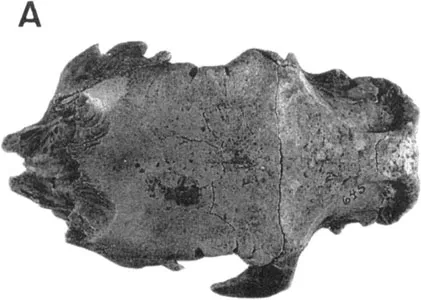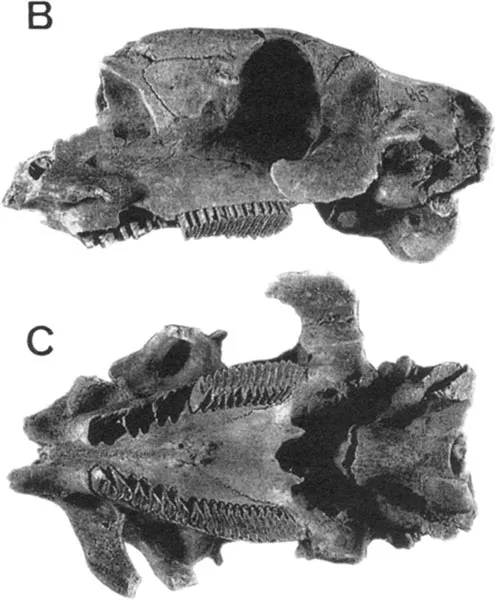
eBook - ePub
Quaternary of South America and Antarctica Peninsula 1998
Jorge Rabassa, Monica Salemme, Jorge Rabassa, Monica Salemme
This is a test
Condividi libro
- 328 pagine
- English
- ePUB (disponibile sull'app)
- Disponibile su iOS e Android
eBook - ePub
Quaternary of South America and Antarctica Peninsula 1998
Jorge Rabassa, Monica Salemme, Jorge Rabassa, Monica Salemme
Dettagli del libro
Anteprima del libro
Indice dei contenuti
Citazioni
Informazioni sul libro
This text deals with certain geological aspects of the extreme geographical locations of South America and the Antarctic Peninsula. Topics include: Brazil - geology and vertebrate paleontology; pleistocene wave-built terraces of Northern Rio de Janeiro state; and holocene coastal evolution.
Domande frequenti
Come faccio ad annullare l'abbonamento?
È semplicissimo: basta accedere alla sezione Account nelle Impostazioni e cliccare su "Annulla abbonamento". Dopo la cancellazione, l'abbonamento rimarrà attivo per il periodo rimanente già pagato. Per maggiori informazioni, clicca qui
È possibile scaricare libri? Se sì, come?
Al momento è possibile scaricare tramite l'app tutti i nostri libri ePub mobile-friendly. Anche la maggior parte dei nostri PDF è scaricabile e stiamo lavorando per rendere disponibile quanto prima il download di tutti gli altri file. Per maggiori informazioni, clicca qui
Che differenza c'è tra i piani?
Entrambi i piani ti danno accesso illimitato alla libreria e a tutte le funzionalità di Perlego. Le uniche differenze sono il prezzo e il periodo di abbonamento: con il piano annuale risparmierai circa il 30% rispetto a 12 rate con quello mensile.
Cos'è Perlego?
Perlego è un servizio di abbonamento a testi accademici, che ti permette di accedere a un'intera libreria online a un prezzo inferiore rispetto a quello che pagheresti per acquistare un singolo libro al mese. Con oltre 1 milione di testi suddivisi in più di 1.000 categorie, troverai sicuramente ciò che fa per te! Per maggiori informazioni, clicca qui.
Perlego supporta la sintesi vocale?
Cerca l'icona Sintesi vocale nel prossimo libro che leggerai per verificare se è possibile riprodurre l'audio. Questo strumento permette di leggere il testo a voce alta, evidenziandolo man mano che la lettura procede. Puoi aumentare o diminuire la velocità della sintesi vocale, oppure sospendere la riproduzione. Per maggiori informazioni, clicca qui.
Quaternary of South America and Antarctica Peninsula 1998 è disponibile online in formato PDF/ePub?
Sì, puoi accedere a Quaternary of South America and Antarctica Peninsula 1998 di Jorge Rabassa, Monica Salemme, Jorge Rabassa, Monica Salemme in formato PDF e/o ePub, così come ad altri libri molto apprezzati nelle sezioni relative a Biological Sciences e Evolution. Scopri oltre 1 milione di libri disponibili nel nostro catalogo.
Informazioni
1
The presence of Neochoerus Hay, 1926 (Rodentia, Hydrochoeridae) in Pleistocenic sediments of Southwestern Buenos Aires Province, Argentina
Comisión de Investigaciones Científicas (CIC) & Departamento Paleontología Vertebrados, Museo de La Plata, La Plata, Argentina.
ABSTRACT: An almost complete skull of Neochoerus sp. (Rodentia, Hydrochoeridae) from Bajo San José (lat. 38°34′S, southwestern Buenos Aires province, Argentina) is described. The bearing unit is considered of Ensenadan Land-Mammal Age (Early-Middle Pleistocene). This is the record of highest latitude of the genus, and of the Family Hydrochoeridae since the end of the Pliocene. Bajo San José is placed in the border between two zoogeographic subregions. The presence of Neochoerus at this latitude can be taken as an example of the historical dynamism of the Pampasic fauna during the Quaternary, which was signed by the strong climatic changes characteristic of the Pleistocene. The accompanying fauna is conformed by genera or species inhabiting today under either more humid and temperate conditions or more arid ones than those of the area of Bajo San José. The former may suggest more arid conditions than today for this area, and the latter, may either be relict forms of more humid and warmer prior conditions, or indicate environmental changes towards higher temperature and humidity which favoured their southern dispersion along rivers and streams.
RESUMEN: Se describe un cráneo casi completo de Neochoerus sp. (Rodentia, Hydrochoeridae), hallado en Bajo San José (lat. 38°34′S, sudoeste de la provincia de Buenos Aires, Argentina). La unidad portadora es considerada de Edad Ensenadense (Pleistoceno temprano-medio). Este es el registro más austral del género y de la Familia Hydrochoeridae desde el fin del Plioceno. Bajo San José está ubicado en el límite entre dos subregiones zoogeográficas. La presencia de Neochoerus en esta latitud puede tomarse como un ejemplo del dinamismo histórico de la fauna pampásica durante el Cuaternario, caracterizado por los grandes cambios climáticos del Pleistoceno. La fauna acompañante está compuesta por géneros o especies que habitan en la actualidad zonas más áridas o más húmedas y templadas que las del área de Bajo San José. Las primeras pueden sugerir condiciones más áridas que las actuales de esta zona, y las últimas, pueden ser tanto formas relictuales de condiciones más húmedas y cálidas previas, como indicar cambios ambientales hacia condiciones de mayor temperatura y humedad que habrían favorecido su dispersión hacia el sur a lo largo de ríos o arroyos.
1 INTRODUCTION
New remains of Neochoerus are described in this paper, coming from Bajo San José (Coronel Pringles county, Southwestern Buenos Aires province, Argentina). A preliminary list of the fossil fauna found in this locality was published by Deschamps & Borromei (1992); fish remains were studied by Cione & Lopez Arbarello (1993), and the sigmodontine rodents by Pardinas & Deschamps (1996). The fossil-bearing unit outcrops at both margins of the Sauce Grande river, being the best site a gravel quarry located near the bridge of the National Route 51 over this river (lat. 38°34′ S, long. 61°41′ W), 51 km northeast of the city of Bahia Blanca (Fig. 1). The geological setting has been discussed in Borromei (1989) and Deschamps & Borromei (1992), in whose papers the entire sequence was attributed to a Pleistocene deposit originated by a gravelly braided stream system. Deschamps (1995) assigned this deposit to the Ensenadan (Early-Middle Pleistocene) Land-Mammal Age (Pascual et al. 1965, Cione & Tonni 1995).

Figure 1. Location map.
2 MATERIAL AND METHODS
The fossil material herein described has been compared with skulls of Hydrochoerus hydrochaeris (‘carpincho’): MLP 650, MLP 1406, MLP 14-IX-55-1 and MLP 18-VIII-92–16 from the Departamento de Zoología Vertebrados, 43 and 427 from the Departamento de Paleontología Vertebrados, Museo de La Plata, La Plata, Argentina, and with the following fossil specimens from Museo Argentino de Ciencias Naturales ‘Bernardino Rivadavia’ (MACN), Buenos Aires, of related genera: MACN: 16688, 5302, 5313, 587 and 588.
The ontogenetic stage of this specimen was estimated following Mones (1991: 96, Fig. 12) who proposed five classes of ages (Ages 0–4) taking into account the ossifying sequence of the basicranium.
3 SYSTEMATICS
Family HYDROCHOERIDAE Gray, 1825
Subfamily HYDROCHOERINAE Gray, 1825
Genus Neochoerus Hay, 1926 Neochoerus sp. (Fig. 2 A, B, C)
Material: UNSGH (Universidad Nacional del Sur, Geología Histórica) 645: part of the skull with right P4-M3 and left M3.
Description: It is a very well preserved skull, though without the rostrum and part of the zygomatic arches. It is a young specimen of age 2 since its exoccipital-basioccipital and basisphenoid-presphenoid (Ages 1 and 2) sutures are ossified, but not its exoccipital-supraoccipital and basioccipital-basisphenoid ones (Ages 3 and 4 respectively). Its size is approximately 20% larger than that of the single living species and genus Hydrochoerus hydrochaeris (see Table 1). Consequently, it can be accepted that when adult, it could have reached the size of the species of the genus Neochoerus, that is, a third to half larger than the living species.

Figure 2. Skull of Neochoerus sp. UNSGH 645. a) Upper view.

Figure 2. b) Lateral view, c) Lower view. Scale: 5 cm.
Neochoerus sp. UNSGH 645 | H. crespoi MACN-16688 | H. dasseni MACN-5302 | N. tarijensis MACN 587–588 | H. hydrochaeris (six skulls) | ...
|---|